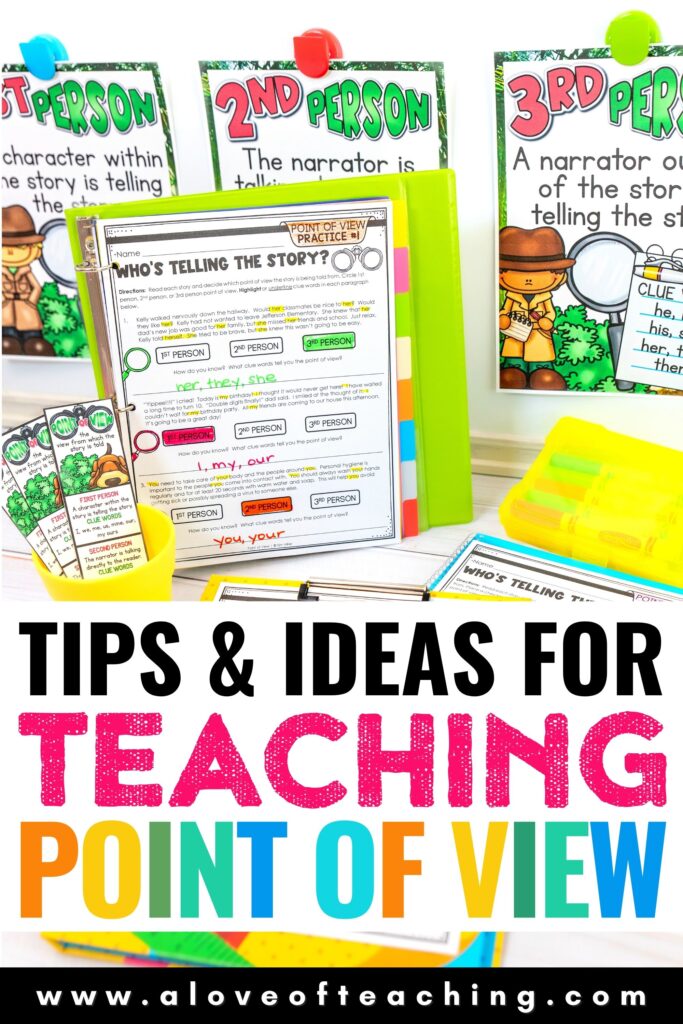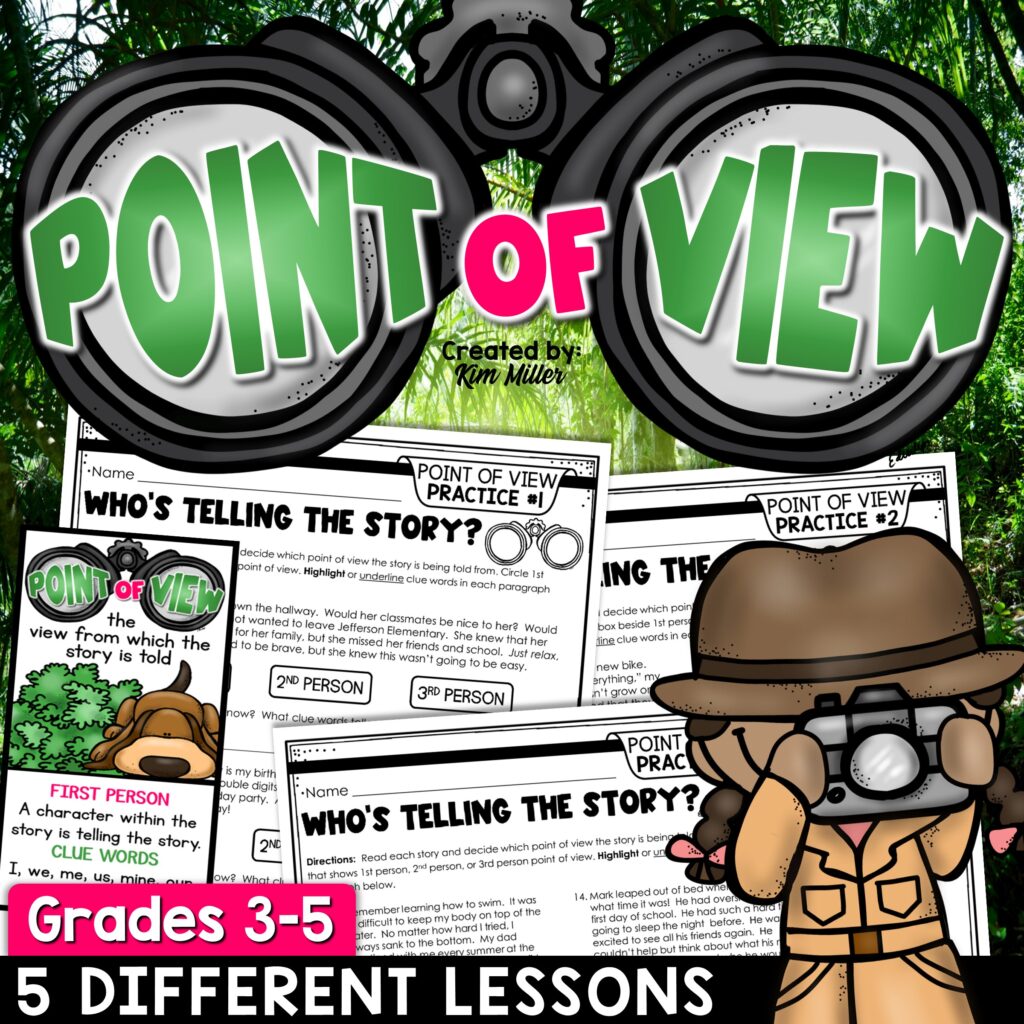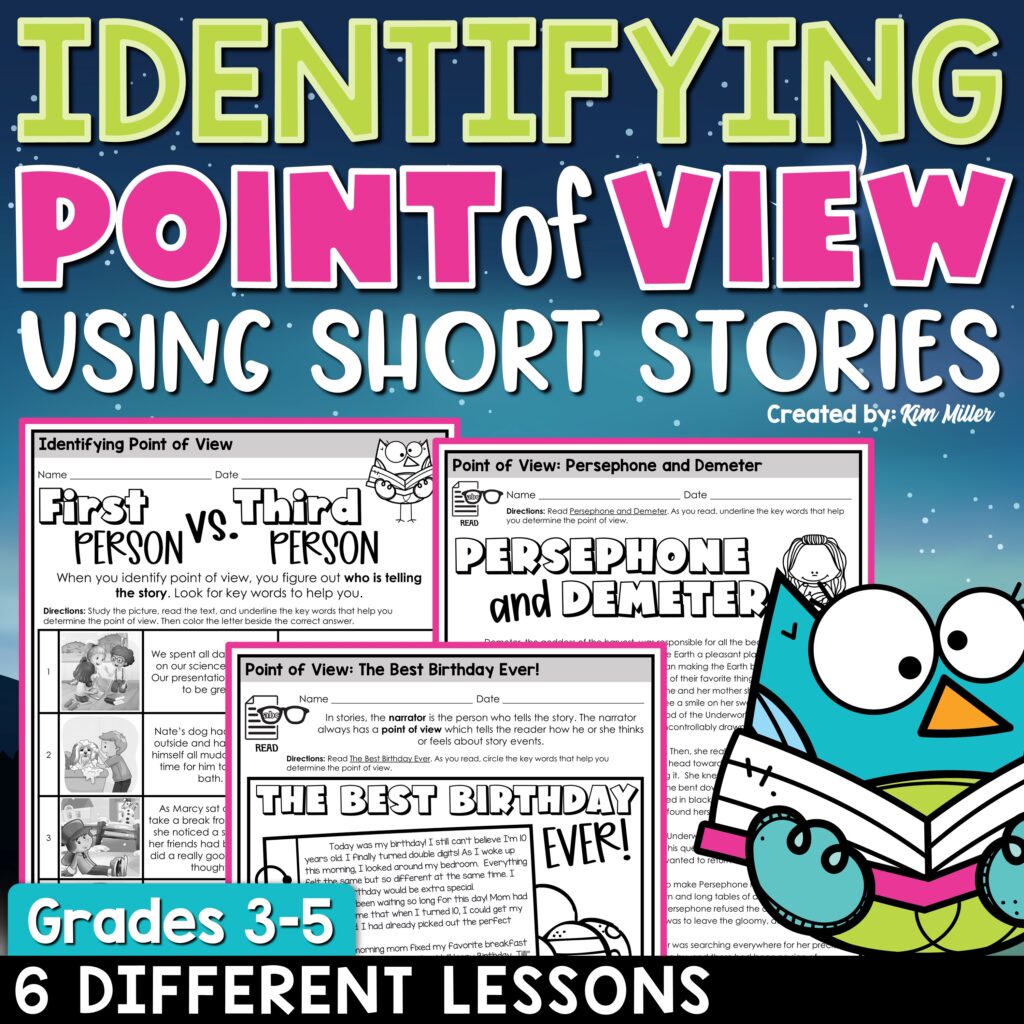5 Quick Wins for Teaching Point of View
Students love to be detectives, right? Well, if you are teaching point of view in the upper elementary classroom, now is the perfect time to get your student’s magnifying glasses out! Here, I will show you some tips on how to engage your students in learning all about point of view.
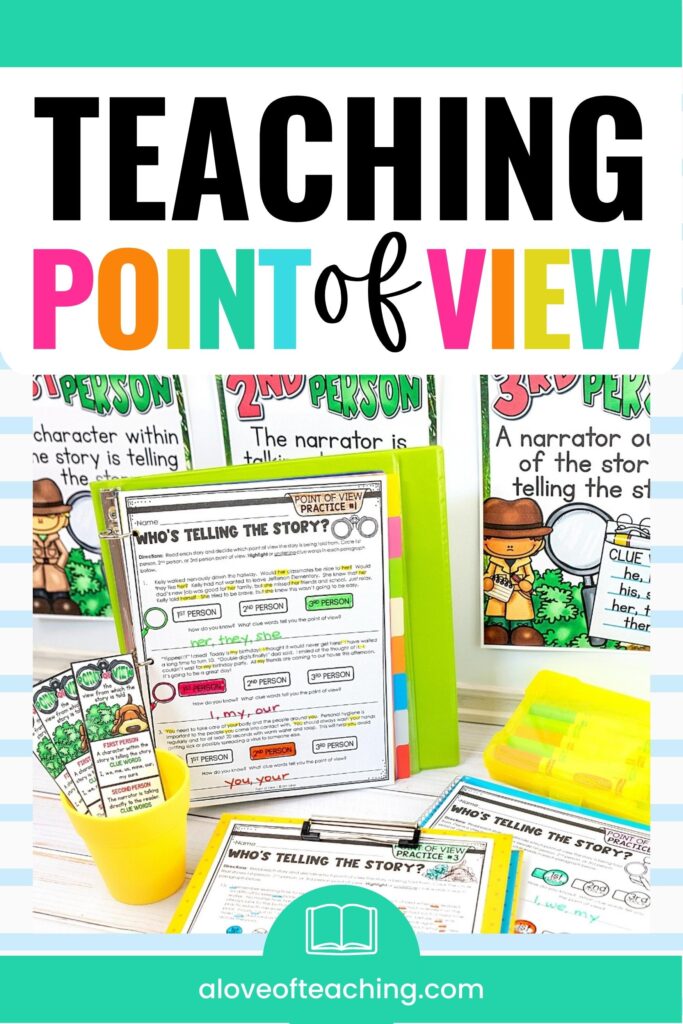
Getting Started Teaching Point of View
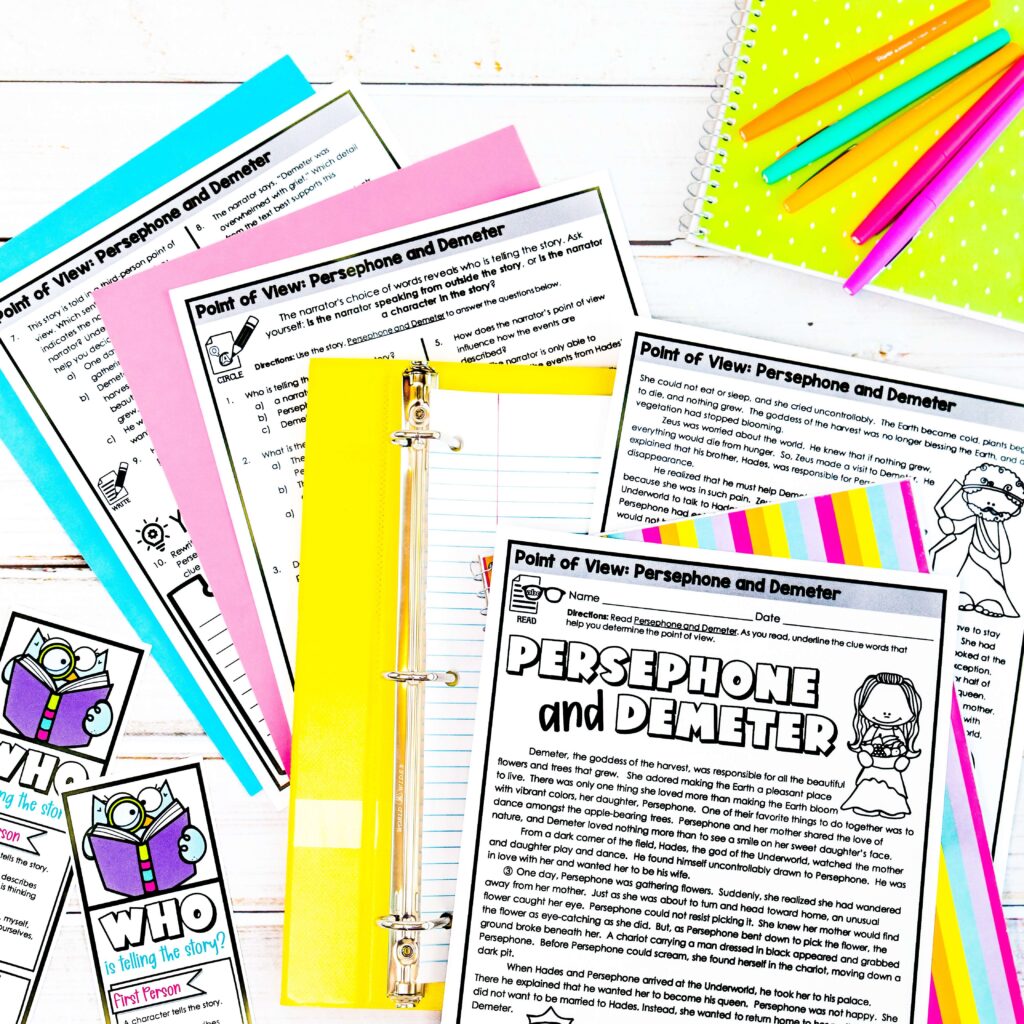
First, in order for students to understand point of view, they must comprehend the text that they are reading. Be sure to use grade-level appropriate texts that allow students to engage in the content of what they are reading! Identifying Point of View Using Short Stories is perfect for students in grades 3-5 who have mastered point of view and need a little more practice digging deeper into the text.
To start teaching point of view it’s important to use short passages to model how you would go about using your detective skills to identify the point of view in a text. Remind students to search for clue words that will help them determine the point of view of the story or passage. By using short paragraphs you can search for clue words together with your students and model how to find keywords!
You could also create an anchor chart with your students! Using an anchor chart, write down the keywords you find in short sample paragraphs. This resource has lots of practice activities for beginners. Encourage students to be detectives and look for the clue words with you! As your students start to catch on, they will help you complete the anchor chart! Now, you have created a shared chart for students to reference when teaching point of view!
Clue Words to Look For

These printable posters and student bookmarks from Point of View Worksheets, Activities, and Task Cards are the perfect tools to help you get started identifying clue words with your students. This resource focuses on first, second, and third person points of view. It’s an excellent point of view introduction lesson for upper elementary students.
First person point of view will include clue words like “I”, “we”, “me”, “us”, “mine”, and “ours”. This shows the reader that the speaker is a character in the story. The character will reveal what they are thinking and feeling. When teaching point of view, remind students that when they tell a story about themselves, they use the same words!
Second person will have clue words such as “you”, “your”, and “yours”. This type of text is usually a nonfiction how-to or technical text. The speaker is talking directly to the reader!
“He”, “she”, and “they” will be in third person point of view texts. Here, a narrator outside of the story is telling the story. They will be able to tell the reader the thoughts and feelings of those characters in the story.
Give Students Time to Practice

Once your students have a good understanding of the clue words, get them all suited up with highlighters and magnifying glasses! A resource like Point of View Worksheets, Activities, and Task Cards is the perfect way for students to apply their new skills of finding clue words to help determine the point of view. These printable and digital no-prep activities are perfect to use with students struggling to understand the concept of who is narrating a story. They also make a great introduction activity to point of view! This resource can easily be used as a supplement for teaching point of view in grades 3-5.
Teachers like you said:
⭐⭐⭐⭐⭐ I love this resource! It works great if you have students that are distance learning and students in the classroom! The students liked highlighting and being able to circle their answers. I found they were very engaged. I liked how the assignments got more challenging as well! The students also loved the bookmarks! I would definitely recommend it to anyone! – Brittany K.
⭐⭐⭐⭐⭐ This is a great resource! I like how there is an online version that you could use with Google Classroom and the anchor charts for 1st, 2nd, and 3rd person POV are excellent visuals! I also like how with each practice, the reading gets more challenging for the kids. This would either be great using for a gradual release model or during small groups. There is also an answer key! – Ruth L.
Point of View Follow Up Activity
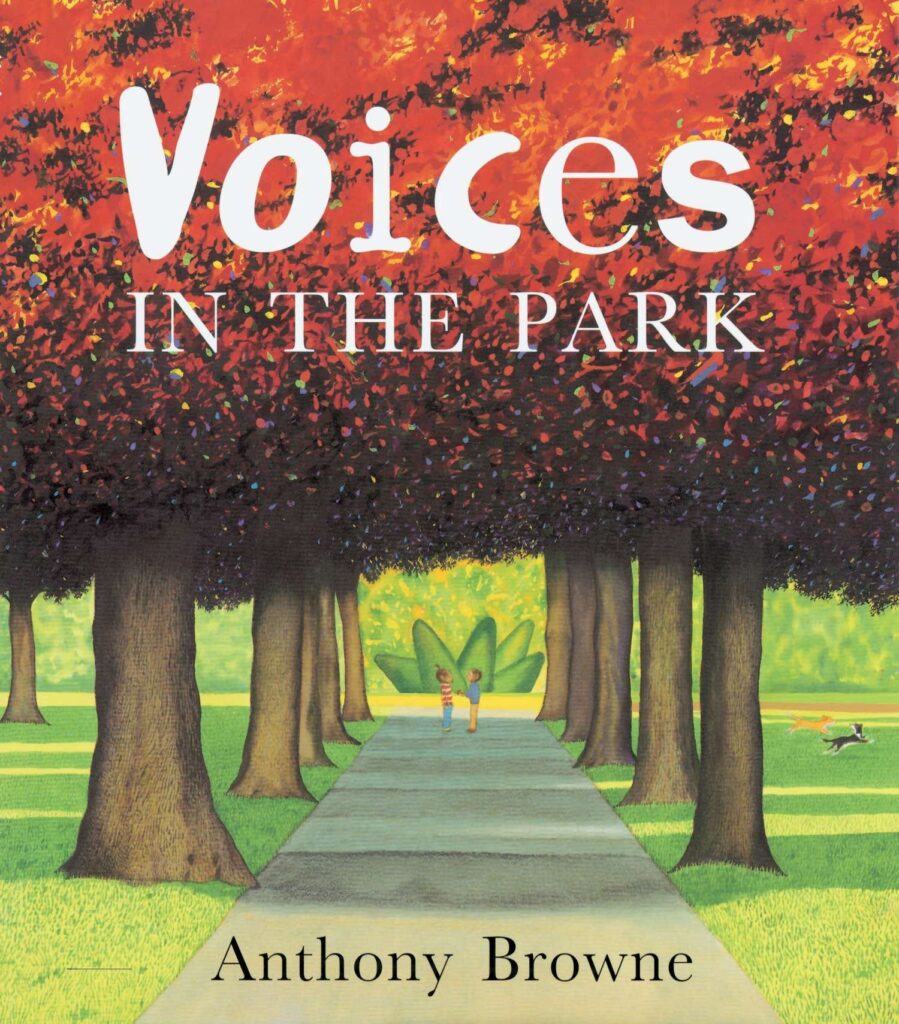
After mastering their detective skills and finding clue words to identify the point of view in a text, students can begin to discuss how the point of view affects the story. To get your students thinking about this idea, you can read Voices in the Park by Anthony Browne. This story is about four different people who experience the same situations but perceive them differently. Not only can you discuss the differences in each point of view, but students can engage their SEL (Social Emotional Learning) skills by empathizing with characters and their experiences. This book is a must-have when teaching point of view!
Practice with Short Stories

If you teach 4th grade and follow Common Core Standards, you’ll definitely want your students to practice correctly identifying and explaining first and third person points of view. In 4th grade, students must be able to compare and contrast the point of view from which different stories are narrated, including the difference between first and third person narrations. Consider giving Identifying Point of View Using Short Stories a try! This resource is aligned to 4th grade standards, but it can easily be used in 3rd and 5th grades when teaching point of view.
Through a variety of short stories and 19 pages of fun and engaging activities, students will learn how to use clue words to effectively analyze literature. From realistic fiction to myths, each short story includes a high-interest topic that students will love to read about!
These activities will help your students improve their critical thinking skills while gaining a deeper understanding of the author’s purpose. Each lesson in this packet will help your students better understand what they are reading and be able to answer common questions on standardized tests.
I hope these tips are helpful for teaching point of view to your students! I can’t wait to hear what resources you used! CLICK HERE to follow my store and receive notifications when more resources like these are added. Every new resource is 50% off for the first 24 hours!
These no-prep point of view activities will help you introduce this skill and provide additional practice in a fun and engaging way!
Save These Point of View Ideas for Later!
Make sure to save these tips to your favorite classroom Pinterest board! When it is time to teach point of view, you will be ready to go!
